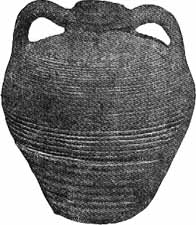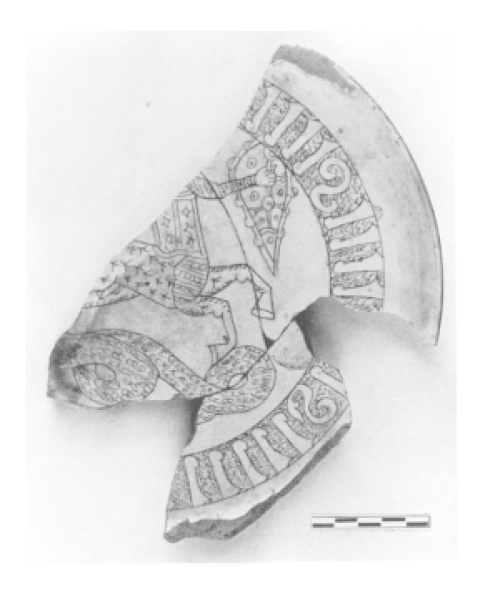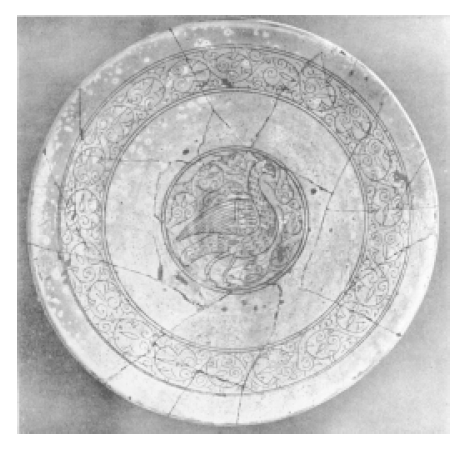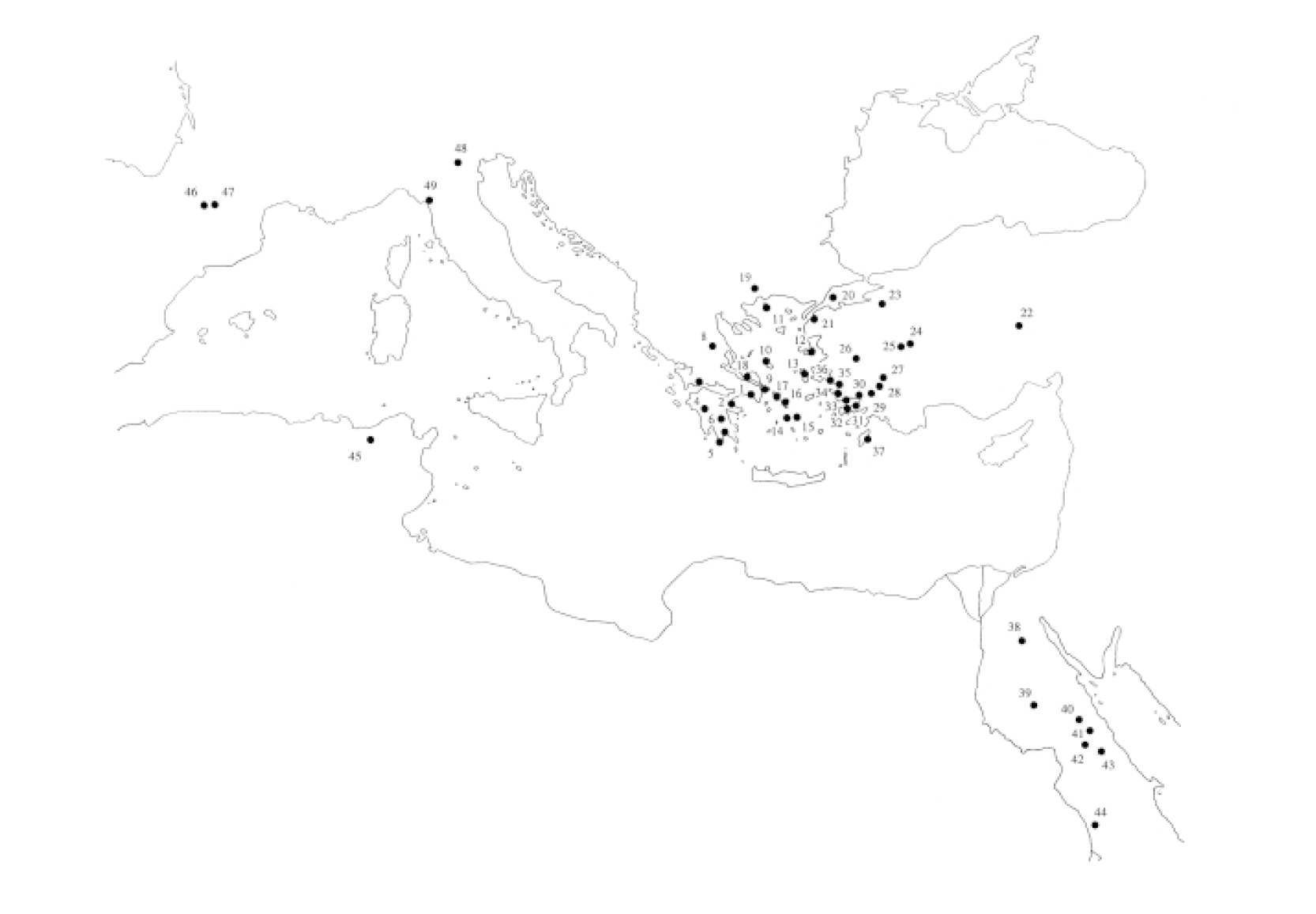- Pottery
- Amphorae
- Containers for commodities, including oil, wine, and honey
- The contents are identificable by their inscriptions on the outside, or now by carbon samples of residue inside



- They are an archeological sign of trade whenever found
- The ninth century brought larger handles to the amphorae
- The use of amphorae did not change with the arrival of Islam, however the 14th century saw the shift to barrels due to Italian influence in trade
- Table Pottery
- Red ceramic pottery with stamped decoration was manufactured until the 7th century in North Africa, western Asia Minor, Cyprus, and Egypt
- New technoology in the 9th century of lead glazing: allowed for white and red-bodied ceramics with greater ornamentation
- The white-bodied pottery was manufactured in Constantinople between the 9th and 11th centuries
- The red-bodied lead-glazed pottery after the eleventh century was produced in Corinth
- Intended for common use, not a luxury item
- Techniques for decoration included fine Sgraffito ware, which has a yellow or yellow-green glaze with very elaborate geometrical or animal motifs, incised with a very fine point through a layer of slip. It could be found across the entire empire, including Italy and the Middle East, and was produced in Corinth


- Cookware was unglazed, as where tableware was glazed
- Since the manufacture of pottery was relatively cheap, it was made everywhere in the empire (as it wasn't worth transporting) and never imported. Certain styles emerged in different locations.
- Amphorae
- Marble
- Quarried in Greece and Asia Minor:

- The island of Proconnesus produced most of the standard gray & white, but went out of production by the 7th century
- Marble started to recycle from abandoned coastal towns
- Cyzicus an important marble source in medieval era. Pieces were even taken intact from it to build a monasteries in the 8th & 10th centuries
- Used for statues, monuments, and buildings, especially in columns, pavement and furniture, or even for altars in churches

- Above, a marble chancel from Baalbek, Lebanon
- Quarried in Greece and Asia Minor:
- Metalworking
- Copper Alloy: Household objects exported to Western Europe in the 6th-7th centuries, such as basins, washing sets, and brass buckets
- Brass buckets adorned with hunting scenes and inscribed in Greek have been found as far west as Britain

- Brass Doors: Manufactured in Constantinople for export to Italy
- Found at churches in Amalfi, Venice, Rome, Monte Cassino, Salerno and Angelo
- Inscripted with a master's name of Symeon (in Greek & Latin) in Amalfi and Theodore and Stavrakios (in Greek & Syriac) in St. Paul's in Rome

Brass door of St. Paul's. For panel detail, see pg. 166 of Mango's The Oxford History of Byzantium.
For more information, please visit The Economic History of Byzantium online, especially the articles on "Pottery and Glass in Byzantium," "Marble and Stoneworking in Byzantium, 7th-15th Centuries," and "Metallurgy and Metalworking Techniques."